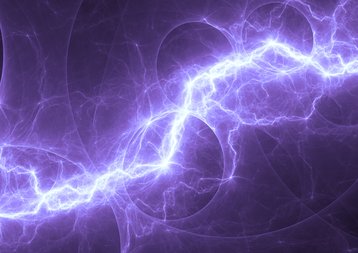It was interesting to see that a lightning strike (reportedly four, not one) caused a loss of data in Google’s Mons (Belgium) facility. According to the press release it was ‘read write errors’ and affected ‘only’ 0.000001% of the data stored.
Given the storage capacity of Google, estimated to be 10-15 exabytes but growing exponentially, that is still a lot of data – 100-150 gigabytes, although I suspect that it represents a large number of individual user accounts, each one thinking that their data is priceless, like pictures of my dog Jack are to me! (Remembering ‘I love my dog, more than I love you…’ Cat Stevens)
How big is an exabyte?
By the way, if you are struggling to imagine what 10-15 exabytes ‘looks like’? Think about this: You can get 80 bytes onto a good old punch-card, the first ‘mass’ storage device for a computer. If you covered all of England (sorry to the rest of the Union but that’s the price of wanting devolution), some 50,000 square miles, in punch-cards the stack would have to be more than 4 miles thick before you reached 10 exabytes and the pile will weigh more than 900,000,000 million tonnes. If you don’t know what a punch-card is I am at a loss to give another analogy!
But back to the root cause: Lightning will potentially affect your data centre in two distinct ways depending upon ‘where’ it strikes.
The most common strike is to an overhead power-line feeding the facility downstream. The effect is to send a surge in energy (what we used to call a spike) of very short duration, typically <10µs and peak 2kV. The strike usually causes the line feeder to trip, followed by up to three auto-reclose events, assuming that the line/pylon survived. So a single remote strike can impact the data centre at the service entrance with 2-4 voltage surges. A well designed surge protection scheme using SPD’s in a graded array from utility transformer, on the UPS switchboard, on the PDU and down to the final cabinet distribution will progressively clamp that 2kV down to a surge of less than 1V at the load – inconsequential. It is a maintenance issue to make sure that the SPD’s have not degraded by diverting too many surges. So, if the strike was to the feeder line, then Google either didn’t have a good enough SPD scheme or it was ineffective by virtue of degradation. With SPD being an American speciality (they suffer far more lightning incidents than we do in Europe) I would be surprised if that were the case but maybe the devil is in the detail.
Two strikes and you are out
The second lightning effect is far more problematical. If the lightning strikes the facility itself the energy in the strike is diverted to the Earth/Ground mat, usually located around the service entrance, by the terminals and tape. My age and UK electrical training in the 70s - and before anyone says anything, 1970s not 1870s - insists that that I don’t use the term Ground without the explanatory ‘Earth’.
This protects the building fabric but has a very unfortunate effect on electrical loads connected inside the data centre. When the lightning strike occurs and is diverted down the tape conductor the Earth/Ground potential drops to -2kV, again for a very short duration. The load inside the facility is connected from 1 phase to neutral (230V in Belgium) and the neutral is bonded to the Earth/Ground so the load is stressed by 2,230V potential difference across its terminals. The CEBMA/ITIC curve doesn’t specify the upper voltage immunity for 10µs! There is no protection (including UPS despite most UPS sales catalogues having a dramatic lightning-cityscape picture on its outer cover) that you can install to protect the load. You are in the hands of lady-luck and will ‘probably’ lose something or degrade something that will fail later and earlier than it should.
So, Google Mons could well have had a direct strike to the facility and one out of four could have been enough proving that lightning may not strike twice in the same place…
I know that I am biased (as I teach the course!) but the topic is just one of many insights into data centre power systems that is covered in the DCPro ‘Power Professional’ 3-day classroom based course. I look forward to seeing you.



